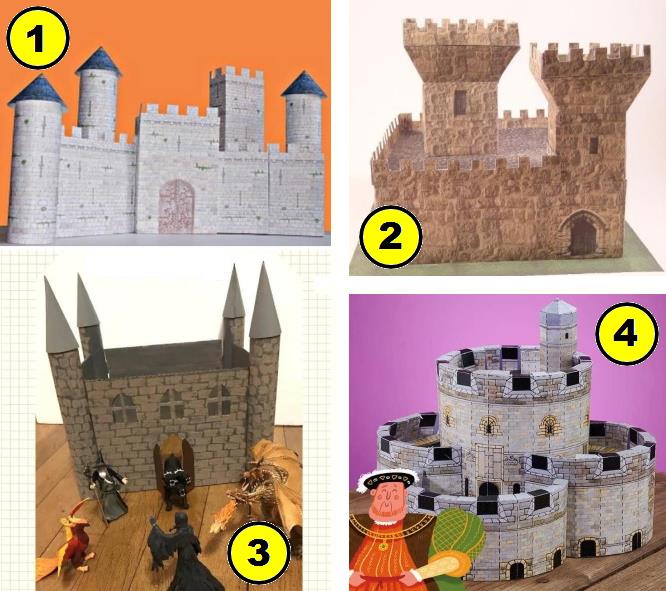This vintage papercraft entitled "La Maison Du Garde," or "The Guard's House," was originally printed sometime in the 19th century by the French publisher Pellerin.
Also known as Imagerie d'Épinal, the French publisher Pellerin was one of the most prominent papercraft publishers in France during the 19th and 20th centuries.
Founded by Jean-Charles Pellerin in 1796 in the city of Épinal, the company gained fame for its colorful illustrations and detailed papercrafts.
The papercrafts produced by Pellerin covered a wide range of themes, from fairy tales and legends to historical scenes and contemporary events.
They were often intended to entertain and educate children but were also appreciated by adults.
One of the distinctive features of Pellerin's papercrafts was the use of mass printing techniques, such as lithography, which allowed for the quick and affordable reproduction of their images.
These images were then cut out and assembled by consumers, often resulting in three-dimensional figures or elaborate scenes.
Pellerin's papercrafts were widely distributed not only in France but also in other European countries and beyond, contributing to the spread of French popular culture.
They were especially popular during the 19th century when mass printing was becoming more accessible, and the demand for domestic entertainment was growing.
Although the mass production of papercrafts declined over the 20th century due to changes in consumer habits and advancements in entertainment technology, Pellerin's legacy continues to live on today.
Many of the company's original papercrafts are now valuable collectibles, and their images are often revisited and reused in contemporary products, thus preserving their cultural and historical significance.
Pellerin still exists today, but its main focus is no longer on papercraft production as in the past. Instead, the company has diversified its activities to include products related to culture and art, such as postcards, art prints, and stationery, most of them offering modern reinterpretations of their old illustrations.
Below, along with the link to download this papercraft, you will find a link to the official website of Pellerin publisher.
Este papercraft antigo entitulado "La Maison Du Garde", ou A "Casa da Guarda", foi originalmente impresso em algum momento do século XIX pela editora francesa Pellerin.
Também conhecida como Imagerie d'Épinal, a editora francesa Pellerin foi uma das mais proeminentes editoras de papercrafts na França durante os séculos XIX e XX.
Fundada por Jean-Charles Pellerin em 1796 na cidade de Épinal, a empresa ganhou fama por suas ilustrações coloridas e papercrafts detalhados.
Os papercrafts produzidos pela Pellerin abrangiam uma ampla gama de temas, desde contos de fadas e lendas até cenas históricas e eventos contemporâneos.
Eles eram frequentemente destinados a entreter e educar crianças, mas também eram apreciados por adultos.
Uma das características distintivas dos papercrafts da Pellerin era o uso de técnicas de impressão em massa, como a litografia, que permitia a reprodução rápida e acessível de suas imagens.
Essas imagens eram então cortadas e montadas pelos consumidores, muitas vezes resultando em figuras tridimensionais ou cenários elaborados.
Os papercrafts da Pellerin foram amplamente distribuídos não apenas na França, mas também em outros países europeus e além, contribuindo para a disseminação da cultura popular francesa.
Eles eram especialmente populares durante o século XIX, quando a impressão em massa estava se tornando mais acessível e a demanda por entretenimento doméstico estava crescendo.
Embora a produção em massa de papercrafts tenha diminuído ao longo do século XX devido a mudanças nos hábitos de consumo e avanços na tecnologia de entretenimento, o legado da Pellerin continua vivo até hoje.
Muitos dos papercrafts originais da empresa são agora colecionáveis valiosos, e suas imagens são frequentemente revisitadas e reutilizadas em produtos contemporâneos, preservando assim sua importância cultural e histórica.
A editora Pellerin existe até hoje, mas seu foco principal não é mais na produção de papercrafts como no passado.
Em vez disso, a empresa diversificou suas atividades para incluir produtos relacionados à cultura e à arte, como cartões postais, impressões de arte e produtos de papelaria, a maioria deles fazendo releituras com um tom mais moderno de suas antigas ilustrações.
Abaixo, além do link para baixar este papercraft, você encontrará o link para o site oficial da editora Pellerin.































